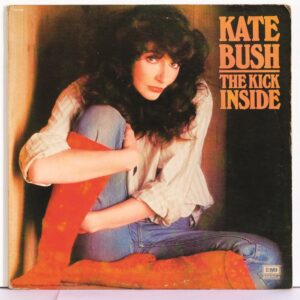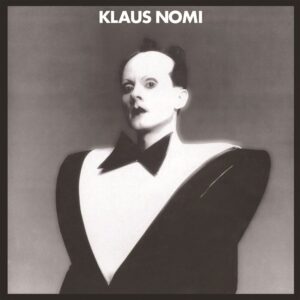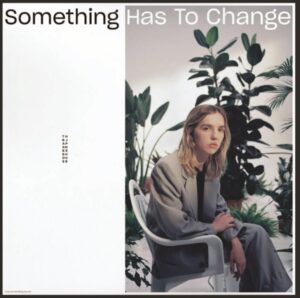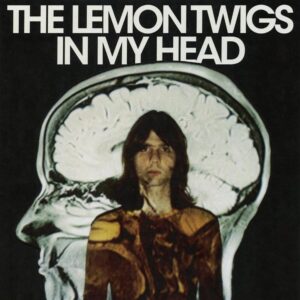For this latest installment of our Indie Playlist, we asked Independent staffers to tell about a song that puts them in an autumnal state of mind: a tune to soundtrack getting those chunky sweaters and flannel shirts out of storage for an afternoon of jumping through piles of leaves; the sonic equivalent of a pumpkin spice latte; or a suitably sinister track to set the mood for the coming spooky season. Listen along on Spotify at https://sptfy.com/NY7U.
‘Wuthering Heights,’ Kate Bush

Limiting Kate Bush’s “Wuthering Heights” to a single time of year is like saying it’s “nice” to watch a movie on a rainy springtime day or that fresh-baked cookies are “tasty” in the winter: seasonal context is largely irrelevant to its delight. But if Bush’s 1978 chart-topping alt-pop musical spin on Emily Brontë’s novel isn’t autumnal enough already (the song begins with the lyric “Out on the wily, windy moors…”), then watch the music video, which is spookiness manifest. Clad in a ghostly gown and looking possessed, Bush belts a wide-eyed and hair-raising tale of tortured love.
As a barista in Brooklyn one summer, I blasted “Wuthering Heights” on loop as I opened the coffee shop in the sweltering sunup. Alone with Kate Bush every morning for those 6 a.m. awning unfurlings and early brews, I felt alive and singular. But then my dad told me that his own early 20s was filled with her music, too, especially in the mornings. The evidence of her timelessness popped my bubble-guise of individuality.
Last week, when my friend Jet turned 25 and a group of us pushed our karaoke capacities to the wee hours in her honor, I cued up this masterpiece without thinking twice. When Bush’s quaver came through, we poised our mics and tried, with tired ambition, to make it our own. Whatever came out of us was certainly spooky — but nothing at all like Bush’s artistry. —Sophie Mann-Shafir
‘The Cold Song,’ Klaus Nomi

There’s probably no more appropriate time to listen to Klaus Nomi’s “The Cold Song” than during October — maybe when you’re seated in complete darkness in your living room, plotting cold-blooded revenge as you sip bright green absinthe out of a crystal glass. (Which, unless you’re me, is probably never.) With Nomi’s operatic countertenor overlaying a climbing harpsichord, it’s the perfect song to get you in the mood for Halloween. And if you’re planning a murder mystery dinner party in a haunted house, or a séance to conjure old flames that ghosted you, I imagine “The Cold Song” is playing in the background as brass candelabras burn all around.
Don’t worry about understanding what Nomi is singing — his vocal style makes the lyrics difficult to follow. If you must know, the song is about freezing to death. It’s fitting as the season turns, and we shuffle our wardrobes to make room for warmer clothes.
Nomi was born in Germany in 1944 and emigrated to New York City in 1972, where he moonlighted as a pastry chef before rising through the ranks of the East Village art scene. Nomi was appearing at nightlife staples like Club 57 and the Pyramid Club by the late 1970s and in 1979 performed with David Bowie on Saturday Night Live. He was known for his theatricality, his bold makeup and costumes, and perhaps the only fashionable receding hairline known to humankind.
Nomi died in 1983 of complications from AIDS, one of the first artists to die from the illness. May we celebrate his legacy this spooky season. —Sam Pollak
‘Something Has to Change,’ The Japanese House

Put on your walking shoes, zip up your fleece sweater, and press play. The steady beat of “Something Has to Change” calls for brisk forward movement.
“You’re going ’round in circles,” sings Amber Mary Bain, who performs as The Japanese House. “Your world feels just the same. Your heart keeps breaking in the same place.” Funky indie-pop synthesizer invites a nod of the head, maybe even a skip or a hop if you’re feeling bold. But don’t forget to consider the message: are you feeling stuck? Wherever you’re walking — city sidewalk, college campus, forest path — consider the things you’re hanging on to, your own dead leaves.
In this song, The Japanese House repeats their persistent affirmation 20 times: Something has to change. Autumn is a transitional season, and now is the time to take the hint. Change your hair, change your shirt, change your home, change your mind, change your life. Otherwise, your heart will keep breaking in the same place. —Eve Samaha
‘In My Head,’ The Lemon Twigs

The season was changing in Oberlin, Ohio, when I saw the Lemon Twigs in concert. Crumpled leaves were underfoot, and the sky was gray and low. It seemed right that the four young men would shuffle into town during this transitional period and emulsify the present and the past. Two of them — brothers — had shag haircuts, their long noses poking out from behind curtained bangs. The bassist had sideburns and a shapely Afro. The drummer wore a shirt so tight it looked like body paint. (Actually, they all wore shockingly tight T-shirts and bottom-heavy jeans.) They were lean and sort of fragile-looking, but the brothers threw high kicks from beneath their guitars, and their insistent falsettos wore me down until I loved them. They sounded like a time gone by but were of the here and now. “School stinks!” one of them crowed between songs, and the crowd of college students cheered.
“In My Head” seems to bring the sky even lower. It feels like grinding leaves under your heels or smelling the bitter inside of a pumpkin. It’ll charm you into a pleasant autumnal sorrow — something like nostalgia, but less desperate and more cheerful.
“I am different in my head,” the brothers sing. “I am someone else instead.” They sing of “sadness all the time,” of dreams with “symbols that repeat,” and “strangers passing.” But the best part of the song comes at the end when they sing in harmony, “ooh” and “la-la-la” — maybe silly-looking in writing but different in my earbuds, in my head, transformed and transported. —Dorothea Samaha
‘Autumn Sweater,’ Yo La Tengo

Though it’s probably a too-obvious choice for this list, few songs really do feel like fall to me more than Yo La Tengo’s “Autumn Sweater.” The lead single from the band’s magnificent 1997 album I Can Hear the Heart Beating as One is all gentle melancholy, a repeated progression of four synthesizer chords over a softly chugging percussive background. Every time I hear it, it somehow manages to evoke the mood of an afternoon when the sun sets a little earlier than it did the day before.
The lyrics describe a decisive moment in a relationship that’s just recently begun, or maybe one that’s on the verge of ending: an ambiguous narrative that seems to endlessly reconfigure itself depending on how I’m feeling at the time and what’s going on in my life. “We could slip away, wouldn’t that be better?” Ira Kaplan sings in soft tones of russet and gold. “Me with nothing to say, and you in your autumn sweater.” —John D’Addario
‘Pink Pony Club,’ Chappell Roan

So, that’s it? Summer’s over and we’ve all agreed to be boring? We’re going to watch reruns on ABC Family and call it hygge? Shut out the world, light a three-wick candle, and look inward? This is our idea of autumn?
I’m sorry, but I will not become a flannel person. I tried looking inward, and I didn’t like what I saw. I want to keep these rose-colored glasses on forever. And when the air gets chilly, I’ll warm myself up by shaking it on the dance floor at the “Pink Pony Club” — which, to my knowledge, isn’t a real place, but a queeny Neverland imagined by Chappell Roan on The Rise and Fall of a Midwest Princess, an album released at the start of this sleepy season that feels like a friend who wrangles you out of bed and ushers you under the warm glow of the disco ball.
“I heard that there’s a special place/ Where boys and girls can all be queens every single day,” Roan sings over a grandiose piano riff that gives way to a feel-it-in-your-bones bass. She claims that she can hear her mother’s “Southern drawl from a thousand miles away” chastising her for “dancing on the stage in heels” and becoming a “pink pony girl,” a phrase that is simultaneously nonsensical and perfectly coherent, drawing a crisp image of a place where sequins are always in season. —Paul Sullivan



